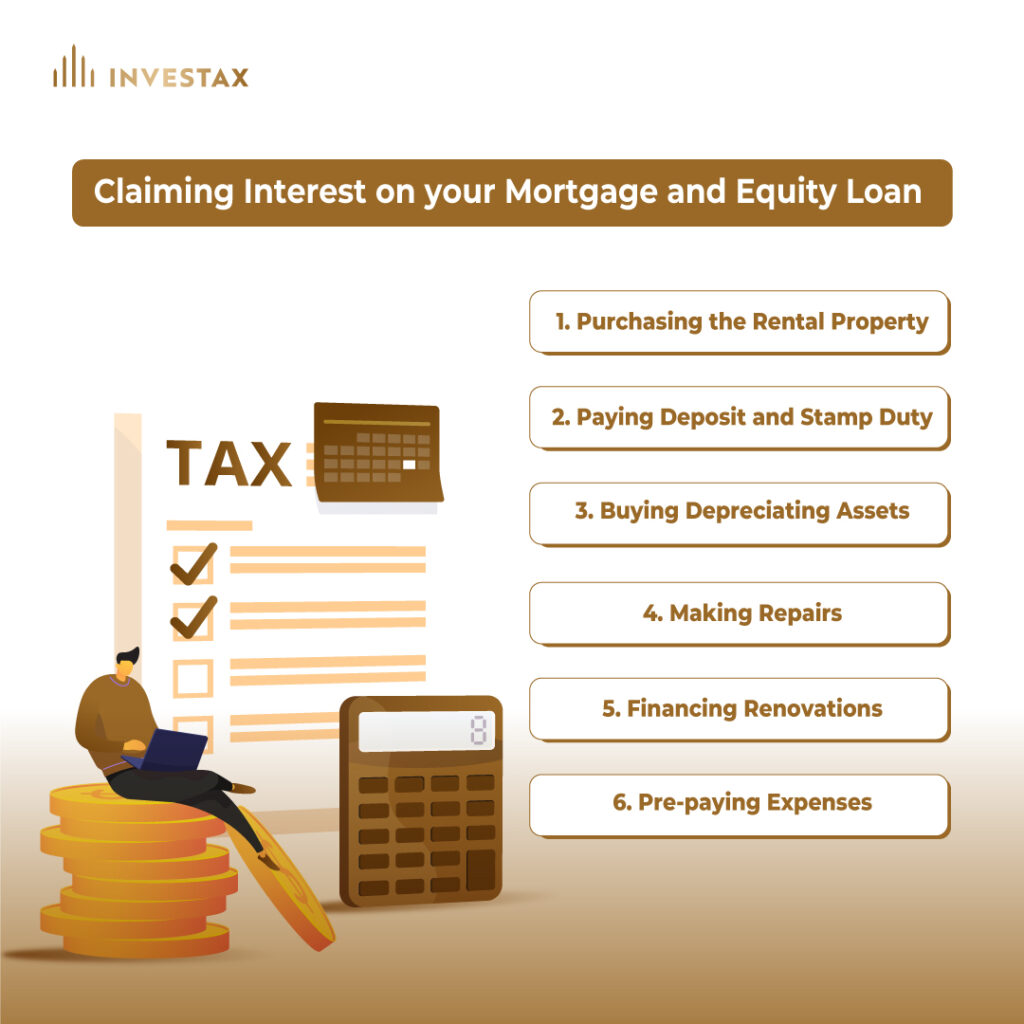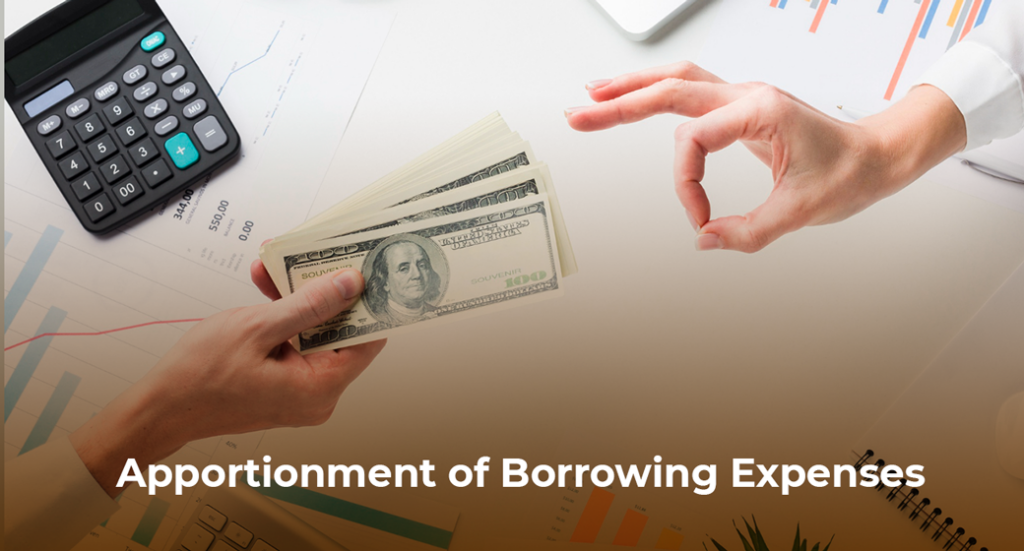Maximising Tax Deductions: A Comprehensive Guide to Interest and Borrowing Expenses for Investment Properties
As we approach the end of the financial year, it’s the perfect time to remind everyone of what the tax office expects from taxpayers with investment properties. Navigating the myriad rules and regulations surrounding investment property tax claims can be daunting, and misunderstandings can easily lead to costly mistakes. Whether you use a tax agent or not, the responsibility for accurately reporting and paying taxes—or claiming refunds—ultimately rests with the taxpayer. To help you navigate this complex landscape, this article will provide insights on how to confidently claim tax deductions, even for some of the more unusual expenses. By understanding the requirements and keeping thorough records, you can maximize your tax benefits and avoid common pitfalls.
Keeping the Right Records for Your Investment Property
To claim a deduction for your investment property, you must have evidence of your rental income and expenses. Generally, invoices and receipts serve as acceptable proof. It’s advisable to take digital copies of these documents in case the physical copies get damaged or destroyed.
To prove that your property is available for rent, an advertisement typically serves as evidence. You should keep a copy of this advertisement. Additionally, retain a copy of the title deed to show ownership of your share in the property. Bank statements indicating that interest has been paid are also necessary. Most banks now provide end-of-year interest summaries, which can serve as evidence. Loan approval documents, mortgage contracts, and other mortgage-related documents can demonstrate that the loan was used to purchase the investment property.

Claiming Interest on your Mortgage and Equity Loan
Let’s address the significant expenses first. You can claim interest expenses incurred on a loan used for the following purposes related to your investment property:
- Purchasing the Rental Property: Interest on mortgage taken to buy the rental property itself.
- Paying Deposit and Stamp Duty: Interest on a loan if you have taken an equity loan using your home to pay for the investment property deposit and stamp duty.
- Buying Depreciating Assets: Interest on loans used to purchase assets for the rental property, such as a new air conditioner.
- Making Repairs: Interest on loans used to fund repairs to the rental property, such as roof repairs due to storm damage.
- Financing Renovations: Interest on loans used to finance renovations to the rental property.
- Pre-paying Expenses: Interest on loans used to pre-pay expenses for the rental property, up to 12 months in advance.
By understanding these categories, you can ensure that you are correctly claiming all eligible interest expenses, thereby maximizing your tax deductions and maintaining compliance with tax regulations.

Example: Purchased a Car with your Investment Property Loan
The Watsons have decided to refinance their existing investment property loan and take out additional funds for a Motor Vehicle. Their existing mortgage on the investment property is $200,000, and they also want to buy a new car for $50,000.
To achieve this, they take out a new loan of $250,000 secured against their investment property. The property remains rented for the entire year starting from 1 July. Their total interest expense on the $250,000 loan for the year is $20,000.
To determine how much interest they can claim as a tax deduction for their investment property, the Watsons need to calculate the portion of the interest related to the investment property loan. Here’s how they do it:
- Calculate the total interest expense: $20,000
- Determine the portion of the loan used for the investment property: $200,000
- Calculate the total borrowing: $250,000
- Formula –
Deductible Interest = (Investment Property Loan / Total Loan) * Total Interest Expense
Deductible Interest = (200,000 / 250,000) * 20,000 = 16,000
The Watsons determine that they can claim $16,000 as an allowable deduction for the interest incurred on their investment property loan. This approach ensures they accurately apportion their borrowing expenses and comply with tax regulations, maximizing their tax benefits while maintaining proper documentation.
Restrictions on Claiming Interest
With the current high interest rates, many properties that were neutrally geared 2-3 years ago have now become highly negatively geared. The ATO is scrutinizing these high interest claims more closely because the recent spike in interest rates may not make sense to them, especially when compared to the stable rates of the past few years. Typically, in a stable market, the interest amount only increases significantly when the loan amount itself increases.
The ATO’s focus on interest claims is due to common mistakes made by taxpayers with investment properties. You cannot claim interest expenses in the following situations:
- Private Use: For periods when you use the property for private purposes, even if it’s only for a short time.
- Private Portion of the Loan: On any part of the loan used for private purposes, whether it’s on the initial loan or if you refinance.
- Redraw for Private Purposes: If you redraw funds for private purposes, even if you’re ahead in your repayments. That’s why it is very important to understand the difference between Redraw Facility and Offset Account.
- Purchasing a New Home: On funds used to buy a new home that is not used to produce income, even if you use your rental property as security for the loan.
- Vacant Land: On funds used to buy vacant land until the construction of your rental property is complete and available for rent.
Understanding these restrictions will help you avoid claiming ineligible interest expenses and ensure your tax returns are accurate and compliant.
Some clients assume that if they take out a loan against their investment property to purchase a personal asset, such as a car or a primary residence, the interest on that loan is tax deductible. However, this is not the case.

Example: Using Investment Property Equity Loan to Purchase a Home/Principal Place of Residence (PPOR)
Emma and John have an existing investment property that they purchased a few years ago. Over the years, the property has appreciated in value, and now they have decided to purchase a home to use as their primary residence.
To buy their new home, Emma and John take out a $300,000 loan secured against their existing investment property. Instead of selling their investment property, they decide to continue renting it out.
They have a mortgage of $30,000 remaining on their investment property, which is added to the $300,000 loan under a facility with sub-accounts. This arrangement means the two loans are managed separately but are secured by the same property.
Emma and John can claim an interest deduction against the $30,000 loan for their investment property, as it is still being used to produce rental income. However, they can’t claim an interest deduction against the $300,000 loan used to buy their new home, as it isn’t being used to produce income, even though the loan is secured against their rental property.
This distinction is important to ensure they accurately claim their interest deductions and comply with tax regulations regarding investment properties.
Understanding and correctly claiming interest expenses on your investment property can significantly enhance your tax benefits. Whether it’s interest on loans for purchasing the property, paying deposits and stamp duty, buying depreciating assets, making repairs, financing renovations, or pre-paying expenses, knowing what you can claim is crucial.
Understanding Borrowing Expenses for Your Investment Property
Borrowing expenses are the costs directly incurred when taking out a loan to purchase your rental property. These expenses can include:
- Loan establishment fees
- Lender’s mortgage insurance (insurance taken out by the lender and billed to you)
- Stamp duty on the mortgage (note that stamp duty on the transfer of the property is a capital expense)
- Title search fees charged by your lender
- Costs for preparing and filing mortgage documents (including solicitors’ fees)
- Mortgage broker fees
- Fees for a valuation required for loan approval
Claiming Borrowing Expenses
- Expenses Over $100: Spread the deduction over 5 years or the term of the loan, whichever is shorter.
- Expenses $100 or Less: Claim a full deduction in the income year they are incurred.
If you repay the loan in less than five years, you can claim a deduction for the balance of the borrowing expenses in the final year of repayment. For loans taken out partway through the income year, apportion the deduction for the first year based on the number of days you had the loan.
By properly accounting for these borrowing expenses, you can ensure you maximize your tax deductions and remain compliant with ATO regulations.

Example: Apportionment of Borrowing Expenses
The Watsons have decided to refinance their existing property loan from CBA to a new bank, ANZ. ANZ informed them that they have some equity in the property and offered the option to take out additional equity on top of their current mortgage against their investment property. They agreed to proceed with the refinance and take a new loan against their investment property. They are taking a loan of $250,000 to pay off the current investment property loan of $200,000 and used the equity to purchase a private car for $50,000. The bank charged a total of $2,000 in establishment fees, valuation fees, and stamp duty on the loan (borrowing expenses).
Since the Watsons’ borrowing expenses exceed $100, they must apportion these expenses over five years, as this period is shorter than the loan term (15 years).
As part of the loan ($50,000) was used for personal purposes, the Watsons can’t claim a deduction for this portion of the borrowing expenses. They obtained the loan on 1 August 2023, so they calculate the borrowing expense deduction for the first year as follows:
Borrowing expenses * (number of relevant days in the year / number of days in the 5-year period) * (amount of rental property loan / total amount borrowed) = deduction for the year
Their borrowing expense deductions for the subsequent years are worked out as shown in the table below:
Borrowing Expense Calculation
| Year | Calculation | Available Deduction for the Year |
| 1 (leap year) | $2,000.00 × (335 ÷ 1,826) = $366.95 | $366.95 × ($200,000 ÷ $250,000) = $293.56 |
| 2 | $1,633.05 × (365 ÷ 1,491) = $400.00 | $400.00 × ($200,000 ÷ $250,000) = $320.00 |
| 3 | $1,233.05 × (365 ÷ 1,126) = $400.00 | $400.00 × ($200,000 ÷ $250,000) = $320.00 |
| 4 | $833.05 × (365 ÷ 761) = $400.00 | $400.00 × ($200,000 ÷ $250,000) = $320.00 |
| 5 | $433.05 × (365 ÷ 396) = $400.00 | $400.00 × ($200,000 ÷ $250,000) = $320.00 |
| 6 | $33.05 × (31 ÷ 31) = $33.05 | $33.05 × ($200,000 ÷ $250,000) = $26.44 |
This approach ensures that the Watsons accurately apportion their borrowing expenses over the appropriate period and only claim deductions related to their investment property.
Conclusion
Understanding and correctly claiming interest and borrowing expenses on your investment property can significantly enhance your tax benefits. With the ATO’s heightened scrutiny on interest claims due to recent spikes in interest rates, ensuring that your claims are accurate and compliant is more important than ever. Avoiding common pitfalls like claiming interest for private use or private portions of loans will help you stay on the right side of tax regulations.
If you are unsure about the end-of-year tax consequences of your investment property, it’s crucial to seek expert advice. Contact Investax Group’s property tax specialists to get personalised guidance and ensure your tax returns are accurate and optimised for maximum benefit.
Reference
ATO – Investment Tool
ATO – Evidence





